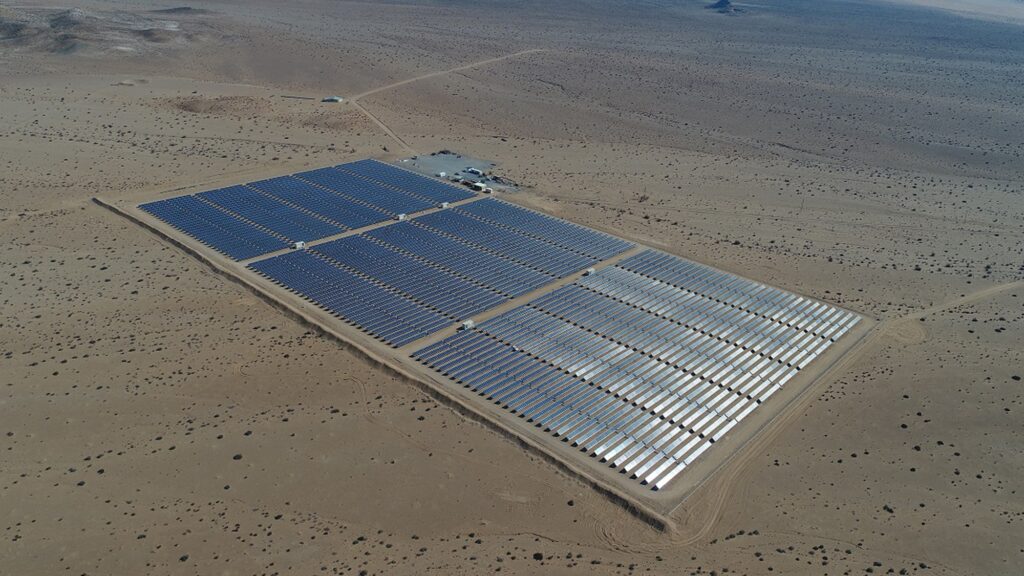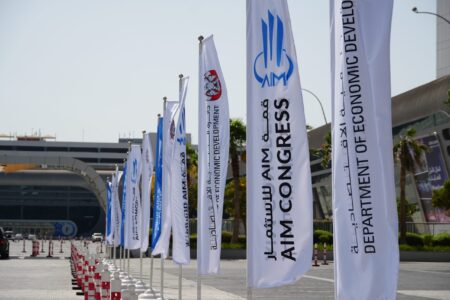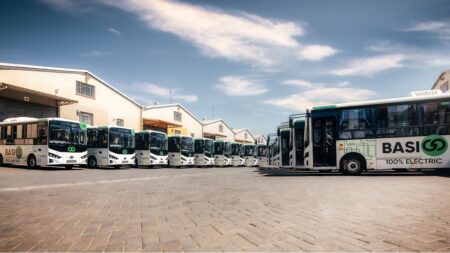- Namibia’s 100MW Rosh Pinah Solar PV project is poised to accelerate the nation’s pace in achieving renewable energy goals.
- The project will be built by an alliance of China Jiangxi International Economic and Technical Cooperation Co., Ltd. and China New Energy Development (Zhejiang) Co., Ltd.
- Namibia’s reliance on imported electricity has been a challenge to its energy independence.
The presence of Chinese contractors in Africa’s infrastructure journey continues to grow after Namibia on Monday entered into an agreement with contractors from China to develop the country’s largest solar plant.
For Namibia, the 100MW Rosh Pinah Solar PV project is poised to accelerate the nation’s pace in achieving renewable energy goals, while at the same time boosting the country’s energy generation capacity.
However, for analysts, the 18-month project is set to further project growing Chinese presence in the continent’s industrialization and renewable energy quest.
On Monday, Namibia’s state-owned power utility, NamPower, signed an engineering, procurement, and construction (EPC) contract with a Chinese joint venture to develop the 100 MW Rosh Pinah Solar PV power plant. The contract, valued at approximately $78 million, is a historic step in Namibia’s efforts to bolster its renewable energy infrastructure.
The Chinese joint venture that brings together China Jiangxi International Economic and Technical Cooperation Co., Ltd. and China New Energy Development (Zhejiang) Co., Ltd., is poised to offer expertise and experience in solar energy projects to the table.
According to media reports, Rosh Pinah Solar PV project is expected to play a crucial role in enhancing Namibia’s electricity supply security while supporting the country’s sustainability objectives. As the global shift towards cleaner energy sources intensifies, Namibia is positioning itself as a leader in Africa’s green energy transformation.
The strategic importance of the Rosh Pinah Project
At the signing ceremony, NamPower Managing Director Kahenge Haulofu highlighted the national significance of the Rosh Pinah 100 MW PV project. He described the project as a key component of NamPower’s Integrated Strategic Business Plan for the 2020-2025 period, which aims to secure the country’s energy supply and reduce reliance on imported electricity.
“The Rosh Pinah project is of great national importance,” Haulofu remarked. “It will help the government accomplish its goals of ensuring electricity supply security and self-sufficiency, as outlined in key national planning policies such as the Fifth National Development Plan and the National Integrated Resource Plan.”
Namibia’s reliance on imported electricity, primarily from neighbouring countries especially South Africa, has been a challenge to its energy independence. By tapping into the abundant solar potential within its borders, Namibia seeks to address this issue head-on. The Rosh Pinah project represents a strategic step towards achieving self-sufficiency in electricity generation, which is vital for the country’s long-term economic stability and growth.
A win for economic growth and sustainability
The 100 MW PV plant is billed as a key driver of economic growth and a pillar of Namibia’s sustainability agenda. With a total estimated project cost of 1.6 billion Namibian dollars, the investment is set to generate significant economic benefits. In addition to creating jobs during the construction phase, the plant’s operation will help regulate electricity tariffs, benefiting both individual consumers and the broader economy.
“The investment into the Rosh Pinah 100 MW PV project will contribute to managing and regulating future increases in electricity tariffs,” Haulofu explained. “This will not only benefit individual consumers by lowering increases to their electricity bills but also contribute to the overall economic growth and environmental sustainability.”
As Namibia transitions towards a low-carbon economy, the Rosh Pinah solar plant will play a pivotal role in reducing the country’s carbon footprint. The plant will aid in addressing the renewable energy commitments set out in Namibia’s Renewable Energy Policy and National Energy Policy, positioning the country as a regional leader in environmentally sustainable energy production.
Chinese expertise fuels Namibia’s renewable ambitions
The partnership with Chinese firms is a testament to China’s growing influence in Africa’s renewable energy sector. Over the past decade, Chinese companies have become key players in Africa’s industrialization, particularly in the construction of infrastructure projects, including renewable energy plants.
Their expertise in solar energy development is helping countries such as Namibia harness their renewable resources and accelerate their transition to cleaner energy.
For Namibia, the collaboration with China Jiangxi International Economic and Technical Cooperation Co., Ltd. and China New Energy Development (Zhejiang) Co., Ltd. brings valuable technical know-how and investment capital to the table. These companies have a track record of delivering large-scale renewable energy projects across the globe, making them ideal partners for Namibia’s largest solar energy undertaking.
Read also: Portugal’s Galp Energia projects 10 billion barrels in Namibia’s new oil find
Construction timeline of the Rosh Pinah Solar PV plant
Construction of the Rosh Pinah Solar PV plant is expected to take approximately 18 months, with operations slated to start in the second quarter of 2026. Once completed, the plant will be one of the largest solar energy projects in Namibia and a critical component of the country’s energy mix. It will generate enough electricity to power thousands of homes and businesses, contributing to the stability and reliability of Namibia’s electricity grid.
Beyond providing clean energy, the plant will reduce Namibia’s dependence on fossil fuels and imported electricity, thereby lowering greenhouse gas emissions. This aligns with global efforts to combat climate change and build a more sustainable future for generations to come.
As the country continues to invest in renewable energy projects, it is positioning itself as a regional hub for green energy innovation. Namibia’s abundant solar resources give it a competitive advantage in the renewable energy sector, and projects like Rosh Pinah demonstrate the country’s commitment to leveraging these resources for long-term economic and environmental gains.
The Rosh Pinah Solar PV plant also serves as a model for future public-private partnerships in the energy sector. By collaborating with international firms, Namibia can access the expertise and capital needed to develop large-scale renewable energy projects that would otherwise be difficult to finance and execute independently.
This partnership is emblematic of the increasing collaboration between African nations and China in the quest for industrialization and green energy development. As the globe shifts towards cleaner, more sustainable sources, Namibia’s bold steps in renewable energy development position it as a leader in Africa’s green revolution, with Chinese expertise helping to pave the way.











